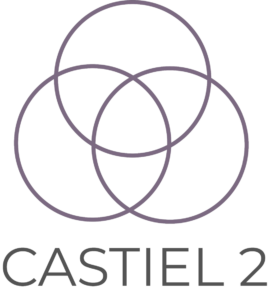CellNOpt (from CellNetOptimizer; a.k.a. CNO) is a software used for creating logic-based models of signal transduction networks using different logic formalisms (Boolean, Fuzzy, or differential equations). CellNOpt uses information on signaling pathways encoded as a Prior Knowledge Network, and trains it against high-throughput biochemical data to create cell-specific models.
CellNOpt is freely available under GPL license in R and Matlab languages. It can be also accessed through a python wrapper, and a Cytoscape plugin called CytoCopter provides a graphical user interface.
CoE: PerMedCoe
COBRA (Constraint-Based Reconstruction and Analysis) is currently the only methodology that permits integrated modeling of Metabolism and macromolecular Expression (ME) at genome-scale. Linear optimization computes steady-state flux solutions to ME models, but flux values are spread over many orders of magnitude. Data values also have greatly varying magnitudes. Standard double-precision solvers may return inaccurate solutions or report that no solution exists. Exact simplex solvers based on rational arithmetic require a near-optimal warm start to be practical on large problems (current ME models have 70,000 constraints and variables and will grow larger).
CoE: PerMedCoe
Palabos is Lattice Boltzmann Method (LBM) solver, available as open source, and massively parallel. The team of Prof Bastien Chopard at University of Geneva (CH) has specialised it to solve a number of relevant biomedical problems, including simulation of blood flow, and bone cement penetration during vertebroplasty. The software has specific features to deal with biomedical problems, reading medical images. Palabos was tested on CADMOS BlueGene/Q (Switzerland), UniGe Baobab (Switzerland).
Palabos – Vertebroplasty Simulator: This solution, currently in its final stage of development, uses Palabos to provide a vertical solution for the pre-operative planning of vertebroplasty. Micro CT images of the damaged vertebral body are converted into an LBM model, which simulates multiple cement injections with different access point and cement volume. The simulation results predict exact filling patterns of the injected cement. Plans of future developments include converting the results into a finite element model, which will predict the increase in biomechanical strength with respect to the untreated vertebra.
Palabos – Flow Diverter Simulator: This solution, currently in its final stage of development, uses Palabos to provide a vertical solution for the pre-operative planning for the insertion of flow diverters. CT scan images of blood vessels with aneurysms or other anomalies are converted into an LBM model. Different types of flow diverters are numerically inserted to test their impact on the blood flow pattern. Simulation output includes wall shear stress distribution in the aneurysm to predict the rate of blood clotting.
CoE: ComBioMed
The High throughput binding affinity calculator (HTBAC) is a scalable solution for adaptive personalised drug discovery. HTBAC it uses high level python object abstractions for defining simulations, physical systems and ensemble-based free energy protocols. The Runner class as part of the HTBAC abstraction uses underlying building blocks middleware developed by the RADICAL team to create and execute multiple concurrent executions of protocols on supercomputing cyberinfrastructures while abstracting and handling execution management, and data transfer.
CoE: ComBioMed
HemeLB, developed by the team of Prof Peter Coveney at University College London (UK), is a software pipeline that simulates the blood flow through a stent (or other flow diverting device) inserted in a patient’s brain. The aim is to discover how different stent designs (surface patterns) affect the stress the blood applies to the blood vessel, in particular in the region of the aneurysm being treated. The pipeline also allows the motion of magnetically steered particles, for example coated with drugs, to be simulated and estimates made as to where they might statistically end up. The HemeLB setup tool voxelises the geometry at the given resolution, and HemeLB (lattice-Boltzmann CFD solver) then simulates the fluid flow within that geometry, using the given velocity-time profiles for each inlet. Once complete, the simulation output is analysed using the hemeXtract utility, which can produce images of cross-sectional flow, or 3D shots of wall shear stress distribution in the geometry using ParaView visualisation software. HemeLB is installed, optimised, and available for use to any user with a valid account and CPU-time on ARCHER, Cartesius, SuperMUC, Prometheus and Blue Waters. The UCL team also provide consulting to biomedical companies and clinical users.
CoE: ComBioMed

The website is operated as part of the CASTIEL 2 project. This project has received funding from the European High-Performance Computing Joint Undertaking (JU) under grant agreement No 101102047. The JU receives support from the European Union‘s Digital Europe Programme and Germany, Italy, Spain, France, Belgium, Austria, Estonia.

